Lotus cars has blossomed since its humble beginnings in 1952. When Colin Chapman built his first trial cars in a London lock-up, Carphile wonder whether he ever dared imagine the success the marque would achieve.
Throughout two successful decades in the sixties and seventies, and on to its acquisition by General Motors in the eighties through to it’s ownership by DRB Hicom today, Lotus cars have maintained their reputation for innovative engineering and responsive, lightweight sports cars.
As part of our Best of Marques blog series, Carphile select five of our favourite classic Lotus models from the British legend.
The Future Classic – Lotus Elan M100
Although it was produced after Lotus’s sale to General Motors, the Elan M100 stayed true to founder Colin Chapman’s design philosophy: “simplify then add lightness”.
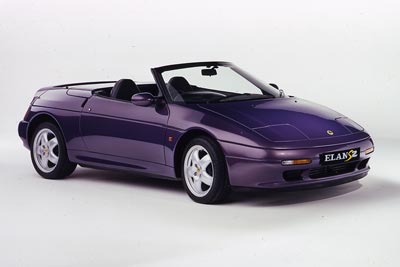
Lotus Elan M100 (S2)
First released in 1989, the Elan M100 is famous for being designed by Peter Stevens (designer of the McLaren F1) and for being the first, and so far the last front-wheel drive car made by Lotus. Don’t let those front-driving wheels put you off, this is a sports car known for its ground covering ability and regarded as one of the finest handling front wheel drive cars of all time.
Available in two versions, both powered by a 1,588cc Isuzu engine. The Elan SE was turbocharged, producing 162bhp, enough to propel the 997kg car from 0-60 in 6.5 seconds and on to a top speed of 137mph. A normally-aspirated version, badged Elan, was also produced but sold in small numbers.
It was sales figures that spelled the end of the Elan M100. The car didn’t sell in the numbers needed to pay back GM’s £35 million development investment. Mixed with the early nineties recession and competition from the Mazda MX-5 meant Lotus pulled the plug after only 3 years.
Only a few years ago you could pick a good example for less than £5,000 but this is now £7,000. We expect this will only rise, as the market wakes up to this underrated front-drive Lotus sports car, making the Elan a good Lotus classic bet for the future .
Buy one while you can – Lotus Esprit
A genuine British super car. The Lotus Esprit emerged from the pen of legendary car designer Giorgetto Giugiaro, starting life as a concept car at the 1972 Turin Motor Show, it moved from spotlights to silver screen, famously starring as James Bond’s underwater car in the Spy Who Loved Me. But the real sign of the Esprit’s star status is that its appeal crossed generations, with an impressive production run from 1976–2004, during which time over 10,000 left Lotus’ Norfolk factory.
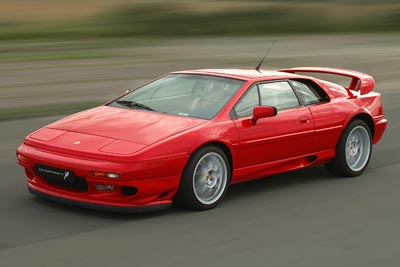
Lotus Esprit
The first generation Esprit (S1), weighed less than a tonne and offered handling that was hard to beat, while later models (S5) could reach speeds of up to 175mph. Nearly forty years on an Esprit still has that super car wow factor, yet prices for this super star start at under £20,000. Like any super car purchase, tread carefully (and ideally consult specialist advice) but prices for the good examples are very much on the up so if this is a car you’ve always wanted – buy one while you can.
The Superstar – Lotus Cortina
A collaboration between Lotus and Ford, and also known as the Ford Cortina, the Cortina was produced between 1963 and 1970. As work was underway on Lotus’s own engine, Colin Chapman was asked by Ford whether it could be fitted to one of the famous saloons for group 2 homologation. So the Lotus Cortina was born and versions of both the Cortina Mk I and Mk II were produced with the engine.
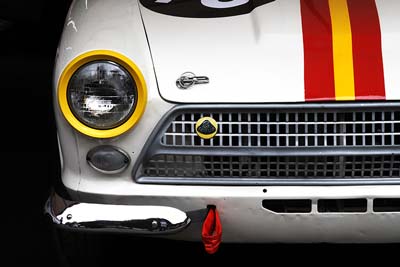
Lotus Cortina
It was a popular car with enthusiasts and quickly became a racing superstar with Jim Clark driving it to take the British Saloon Car Championship crown in 1964. More successes followed and now the Mk1 is a regular class winner in modern historic touring car racing.
With only 3301 Mk1’s and 4032 Mk 2’s produced, genuine Lotus Cortina cars (beware of imitations) are rare and highly prized amongst collectors. For over 35 years the Lotus Cortina Register has been supporting UK owners and keeping a register, so if you’re looking to buy one it would be worth making contact with them.
The game changer – Lotus Elan
Perhaps the personification of Colin Chapman’s design philosophy, the original Elan replaced the expensive to produce Lotus Elite, combining a lightweight chassis (just 680kg) with advanced technology to produce a car that delivered elegant good looks, impressive performance and superb handling.
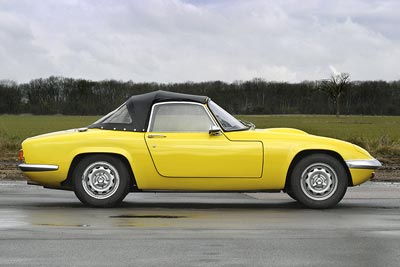
Lotus Elan
A fibreglass shell sat on a steel backbone chassis to reduce the weight, while a 1,557cc evolution of the Ford Kent engine fitted with the famous Lotus-designed Cosworth twin-cam head, 4-wheel disc brakes, 4-wheel independent suspension, and rack and pinion steering were responsible for its game changing performance, which was well ahead of the competition and has kept the pretty, nimble and lightweight Elan firmly in enthusiasts minds for over half a century.
The legend – Lotus Type 49
A ground breaking Formula 1 car, the Type 49’s influence has been felt in all F1 racing cars ever since. The Type 49 was the first car to be powered by Ford’s then-new Cosworth DFV engine (after Chapman convinced the American car giant to build it) but its key innovation was using the engine to bear some of the structural stress, with the monocoque body bolted to one end and the suspension and gearbox to the other. A concept that has been used by pretty much every Formula 1 car designed ever since.
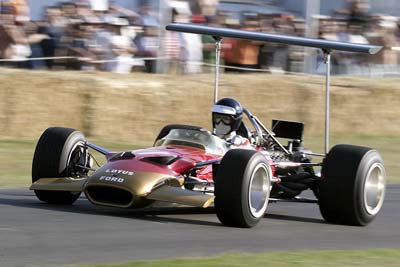
Lotus Type 49
The Type 49 was also the first Formula 1 car to use aerofoils, as seen on the picture above. To start with the these were mounted high up but, after a series of near-fatal accidents, the high wings were banned and Lotus resorted to mounting the wings directly onto the bodywork. Driven to victory on its debut in 1967 by Jim Clark, and to the Formula one world championship the following year by Graham Hill, the car was still winning races in 1970.
Do you agree with our top 5 Lotus cars? Which five Lotus would you choose? Please let us know by commenting below.







